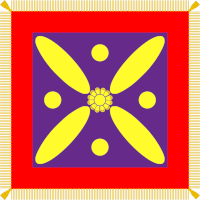cross-posted from: https://lemmy.ml/post/4591838
Suppose I need to find out if the intersection of an arbitrary number of lists or sequences is empty.
Instead of the obvious O(n2) approach I used a hash table to achieve an O(n) implementation.
Now,
loopmini-language aside, is this idiomatic elisp code? Could it be improved w/o adding a lot of complexity?You can view the same snippet w/ syntax highlighting on pastebin.
(defun seq-intersect-p (seq1 seq2 &rest sequences) "Determine if the intersection of SEQ1, SEQ2 and SEQUENCES is non-nil." (cl-do* ((sequences `(,seq1 ,seq2 ,@sequences) (cdr sequences)) (seq (car sequences) (car sequences)) (elements (make-hash-table :test #'equal)) (intersect-p nil)) ((or (seq-empty-p sequences)) intersect-p) (cl-do* ((seq seq (cdr seq)) (element (car seq) (car seq))) ((or intersect-p (seq-empty-p seq)) intersect-p) (if (ht-get elements element) (setf intersect-p t) (ht-set elements element t))))) (defun test-seq-intersect-p () "Test cases." (cl-assert (null (seq-intersect-p '() '()))) (cl-assert (null (seq-intersect-p '(1) '()))) (cl-assert (null (seq-intersect-p '(1 2) '(3 4) '(5 6)))) (cl-assert (seq-intersect-p '(1 2) '(3 4) '(5 6) '(1))) t) (test-seq-intersect-p)
You must log in or register to comment.
